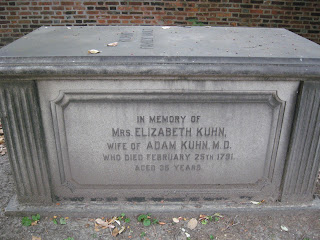
But I am sadden by my discovery. For many years I searched for information about my grandmother's father, John McCaffery. I finally made my first breakthrough several months ago when a McCaffery relative came across my website and contacted me. I was thrilled beyond belief at my good fortune that someone out there knew something about John McCaffery. Though I had searched numerous records, I could never pinpoint the whereabouts of his life. The only information I had on this man was folklore passed down generation through generation. But, I had no facts. I had no facts to verify any of the folklore. I wanted to know who this man was. Where he came from? I also wanted a clue to why he left his only child, my grandmother in the hands of relatives after the sudden and unexpected death of his wife when my grandmother was just three years old.
I remember very clearly the times I sat with my grandmother and listened as she spoke about her parents. There was such sadness in my grandmother's face and voice as she told the story of her mother's death. What was especially heart breaking was my grandmother could not remember her mother's face and no one in her extended family ever had or if they did never showed my grandmother a picture of her parents let alone the mother she did not remember. She was 76 years old and did not know what her own mother looked like. It would be several years later and after much research that I would finally come across a ship record that stated my great grandmother Agnes (Bridget) Boland McCaffery had dark brown hair, blue eyes and was fair skinned. Sadly, I never got the chance to tell my grandmother this news because she had already been dead ten years.
When Bridget Boland McCaffery died in 1915, my grandmother was sent to live with her maternal grandparents. From that time on she rarely seen her father. He would enter and exit her life over the next fifteen years. It is these years that have been most difficult to track in my search. When my grandmother died in 1990, I made a promise to her and myself that I would dig into the past and find as much information as possible so that I could piece together some sense of a life. His story. Their story.
I was so happy to find his immigration records from Ellis Island. To read where he came from, when he arrived here, how tall he was, what color hair and eyes he had and even how much money was in his pocket was simply fabulous. I felt I could envision this man within my mind. This Irish immigrant who came to this country to find a new life. And for a time that is exactly what he did. He reconnected with other members of his family from Ireland. He found employment, a place to live and even a wife. Soon thereafter he had a child. From all perspectives he was living the American Dream. But something happen. Something so sudden, so tragic that changed his life forever and began the downward spiral of one man's life into the pits of hell.
In 1915, his wife of four years died from an appendicitis. Shortly thereafter he handed his only child, my grandmother over to his deceased wife's parents to raise. After which he disappeared only to resurface years later.
What happen to John? Where did he go? There have been so many missing pieces to the puzzle of this man's life. It has been seventeen years since I began to research my family. It has been a long seventeen year journey through the life and times of various members of my family only to have some members of this family constantly elude me until a few months ago when I began to find more pieces that fell swiftly into place, the latest being of my great grandfather John McCaffery.
But it is the latest discovery that nearly brought me to my knees that made my eyes swell up in tears because what I discovered about the last months of this man's life was sad. April 14, 1930 I found proof that John McCaffery was a resident of a homeless shelter for men called "Whosoever Gospel Mission and Rescue Home". This was just four months before his death in 1930. The mission is still located at 101 E. Chelten Avenue in Germantown. The mission has been open since 1892. Records indicated that the father of my grandmother "was a broken man".
Folklore through the generations stated that he became an alcoholic after the death of his wife and he moved from one place to another and held many jobs. In the summer of 1930, my grandmother received a message that stated her father was found on the streets and admitted into Philadelphia General Hospital in the TB Ward. She saw him once before he died.
During this visit, her father was trying to tell her something but he could never articulate his words. I wonder if he wanted to tell her he loved her or that he was sorry he left her.
I cannot imagine what those fifteen years were like after he lost his wife and handed over his child. How lonely he must have felt. How every dream he had became lost.

























































